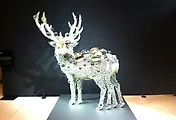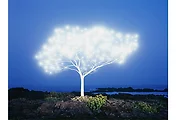워터스케이프 : 물의 정치학 Waterscapes: The Politics of Water
2014년 11월 15일 - 12월 14일
금호미술관 Kumho Museum of Art

http://news.naver.com/main/read.nhn?mode=LSD&mid=sec&sid1=103&oid=001&aid=0007249702
↑ 이 전시에 관한 기사 The article about this exhibition (not many articles it has, so it's hard to find any photos.)
What is this exhibition about? The title explains it all. The Politics of Water. They show several Political/Environmental Issues related to Water. There isn't any fine art in the exhibition. All the artworks are media arts with screens, headphones and speakers. They didn't let me take photos, so it's impossible for me to explain each of the works. Well, it's hard to match the titles to the works with no photos at all, but I'll just give it a try.
제목이 전시를 설명한다. 회화 작품이 아닌 미디어 아트로만 구성된 이 전시는 전 세계적으로 첨예한 정치/환경 문제들을 물과 관련하여 다루고 있다. 사진을 못 찍게 하여 제목과 작품을 연결시키는 것이 쉽지 않은데, 딱히 동영상을 찍는 것이 아니라면 사진 정도는 찍게 해주는 것이 작품 설명/전시 소개에 더 낫지 않나? 생각을 해본다. 우리나라 전시는 유독 사진에 인색하지.
On the 3rd floor, <Man As A Bubble> by Melina Nicolaides was impressive with its beautiful and fantastic image. It was made under the water of Maldive while the Egyptian riot of 2011 was going on. The numerous bubbles reminded me of people on the Earth. Yes, we are many, uncountable, mortal and perishable. We make so many noises living in this world, but all those desperate actions and sounds might be meaningless and empty when we are gone. All those bubbles under the water looked beautiful, but then, the Maldive is in danger of sinking. Quite weird feeling I had for the work.
3층의 <거품인간>은 환상적이면서 아름다웠는데, 2011년 이집트 폭동이 일어나던 당시에 몰디브 수중에서 거품들을 촬영한 것이다. 그 수많은 거품을 개체인간으로, 그리고 인간군상으로 보았을 때, 그 모든 소요들의 덧없음을 떠올리지 않을 수 없었다.
On the 2nd floor, <Tsunami Architecture> by Christoph Draeger & Heidrun Holzfeind alerted me to the environmental problem with water. There are Tsunamis over the world, and those Tsunamis create a lot of victims. However, there is no one to take responsibility for that because it's not a man-made disaster. The government tries to help them, but in a poor country, it's not easy. As a result, poor people are made to spend all their money to repair their houses ruined by Tsunami, and then they go far more poor. A predicament, isn't it?
2층의 <쓰나미 건축>은 쓰나미 피해자들에 대한 경각심을 불러 일으켰는데, 인재가 아닌 자연재해이기에 쓰나미에 대한 책임이 그 어떤 사람에게도 없다는 것이 피해자측에선 문제인 셈이다. 정부가 돕겠지만 그 또한 가난한 나라에선 한계가 있으며, 결국 쓰나미에 피해를 입은 가난한 자들은 그나마 가진 돈을 모두 집보수에 쏟을 수 밖에 없어 더욱 심한 가난에 빠지게 되는 것이다. 이런 생각, 안 하고 살았지, 나는.
What attracted me the most on the basement floor was <Watercolor> by Francis Alys(not sure if the title is right. I didn't take a memo for the title). It was a short, simple film with a man(the artist himself), scooping up a bucket of the Red Sea water and pouring it into the Black Sea. Does this action make any difference? Like this, all the political conflicts surrounding those areas are meaningless.
지하층에서는 <수채화>라는 작품이 재미났는데(제목이 맞는지 모르겠다),예술가가 홍해의 물을 한 양동이 퍼서는 흑해 바다에 붓는 행위가 반복되어 재생되는 필름이다. 그런 행위가 바닷물에 어떤 변화라도 만들 수 있겠는가? 그 지역을 둘러싼 국가들 간의 분쟁들이 덧없게 여겨지는 작품이다.
One more interesting work there was <Standing on a Watermelon in the Dead Sea> by Sigalit Landau. It was a big screen showing the artist herself in the Dead Sea. The Dead Sea has a lot of salinity, so it makes everything float. In the water, the naked artist as an Israeli is standing on a watermelon grown by Palestinians. There she moves her hands straight out from the sides of her body to keep her balance, which looks like a cross. It evokes a lot of thoughts, right?
<사해에서 수박 위에 서 있기> 또한 흥미로웠는데, 염도가 높아 모든 것을 띄워 버리는 사해 안에서 이스라엘인인 예술가는 팔레스타인에서 재배한 수박을 발로 딛고 나체로 사해 안에 서 있다. 그녀는 양 팔을 가로로 뻗은 채 손을 휘저어 균형을 유지하는데, 그것이 마치 십자가로 보이는 효과를 낸다.
And with no photos, it's no fun, right?











